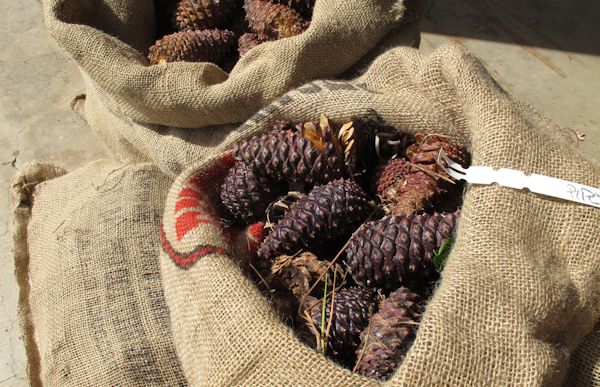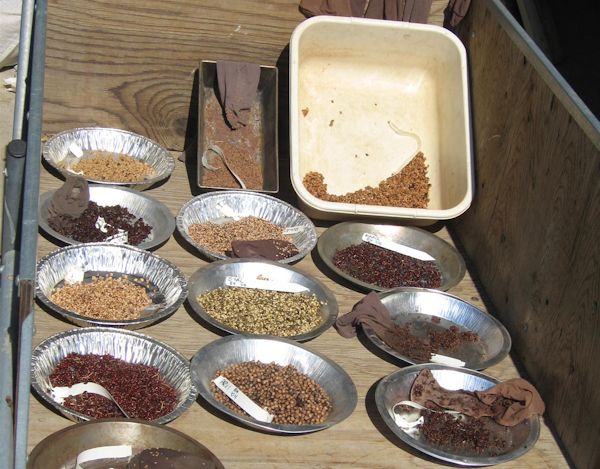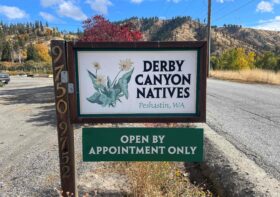Seed collecting time
I enjoy the cyclical nature of nursery work: sowing seeds, germination time, thinning, transplanting, watering… even weeding! All of these plants begin with seeds or, for some species, cuttings. I mostly grow species native to Central Washington so I need to venture out to the nearby fields, hills, streamsides and mountains to find what I’m after.
Collecting is enjoyable yet challenging. You first need to find the species and have the needed permission or permit to collect there; I collect a fair number of species from our own wildlands above our house or from the property of friends. A collection permit from the US Forest Service opens up another large area to scouting and collection. The challenge often comes with returning to the plants at the right time for harvest, when the seeds are mature enough and not yet dispersed by wind or gravity or eaten by birds or insects. Despite best intentions, I may still miss a collection window, or my favored collection site for a particular species may be bare. In those instances I’m usually covered by finding higher elevation (and therefore later) populations or by prospecting in different watersheds. For those species in big demand, such as serviceberry or Ponderosa pine, I’ll want seed from at least two distinct locations with different elevations and habitats.
The plants we grow are used mostly for restoration projects and genetic diversity is an important quality, so I collect from many individuals and try not to bias my collection to, for example, large fruits or tall plants. I also follow the “one-in-twenty” rule, not collecting more than 5% of the seed from any given population. Most seeds remain viable for several years, particularly when stored in air-tight containers in a freezer, so I rarely collect seeds from more than one-third of the species we grow at Derby Canyon Natives. Some need to be collected every year, including maples, Garry oak, willows (from seed) and sagebrush species. For 2012, I’ve got my sights set on 44 species, with eight already bagged and in the shop. My latest collection was purple sage (Salvia dorii); I couldn’t get to the site until the afternoon, so I was met with nearly 100F temperatures… and a good-sized rattlesnake that slithered away from under a nearby shrub. I’ve learned not to listen to music while mindlessly gathering seed in snake habitat!





